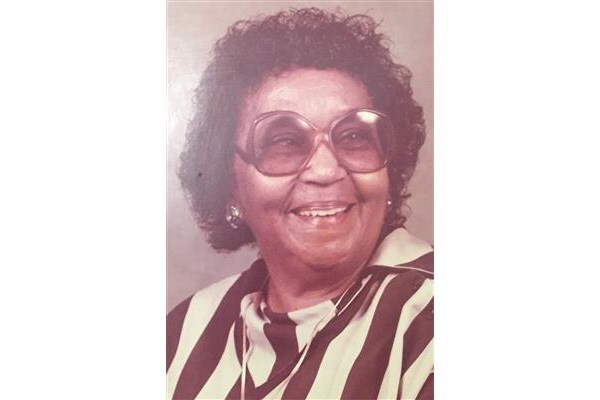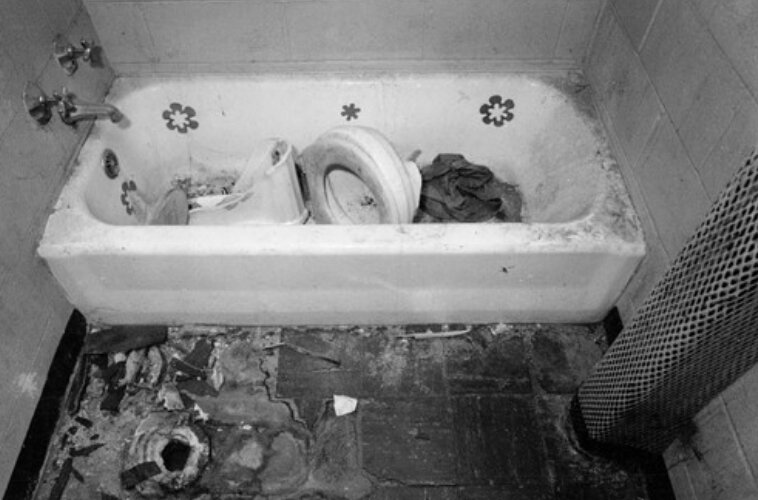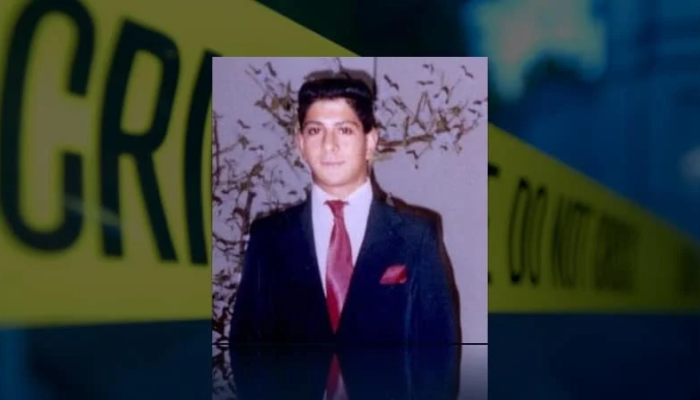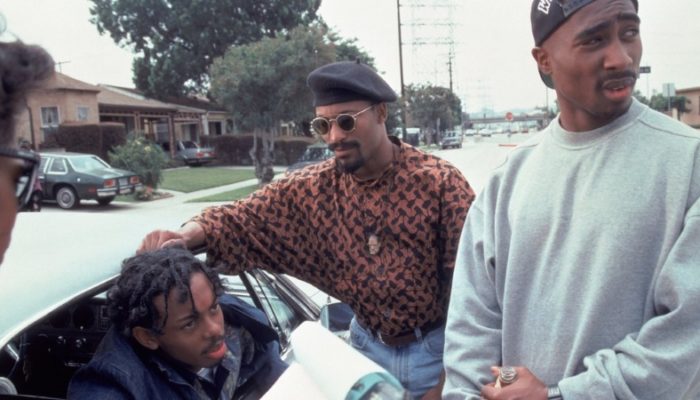In the realm of urban legends and chilling memories, there exists a tale that blurs the traces between reality and fantasy. This is the story of Ruthie Mae McCoy, a female whose existence has become inexplicably entangled with the eerie legend of the Candyman. Ruthie Mae McCoy turned into not an individual whose name might without difficulty strike a chord for most people, however, her haunting story increases questions that challenge our knowledge of the facts. This blog delves into the existence of Ruthie Mae McCoy, her struggles with intellectual fitness, and the perplexing incident regarding her medicine cupboard that sent shivers down the spines of people who heard about it.
Who Was Ruthie Mae McCoy?
Ruthie Mae McCoy became no longer a call that drew attention to the bustling cityscape of city legends. She lived a life largely neglected by way of the arena, one marked using hardships and adversity. Born into poverty and raised on tough occasions, her lifestyle changed in ways removed from the glamor often related to mythical stories. What set Ruthie Mae McCoy aside were her struggles with intellectual health. She was recognized for talking to herself and, at times, cursing strangers on the street. These signs of misery had been an outward manifestation of the internal turmoil she battled at some stage in her existence.
The Medicine Cabinet Incident
One fateful night time, Ruthie Mae McCoy made a smartphone call that might forever be etched within the annals of chilling mysteries. She dialed 911 in a country of panic, her voice trembling as she mentioned that a person was coming via the drugs cabinet of her Abbott Homes condominium. The call itself changed into an unsettling mix of fear and confusion, leaving dispatchers and law enforcement officials bewildered approximately what turned into absolutely transpired.
As officers rushed to the scene, they expected to locate a logical explanation for Ruthie Mae McCoy’s distress. However, what they determined the interior of her condo changed into something but ordinary. The medication cabinet was regarded to have been tampered with, but there has been no on-the-spot evidence of an interloper. This incident left investigators scratching their heads, and it wasn’t long earlier that whispers of the Candyman started to circulate.
The Candyman Connection
The Candyman is a determined person deeply embedded in urban legend—an individual related to horror and supernatural occurrences. According to the legend, if you say his name in five instances in front of a replica, he will exact a terrible vengeance. The connection between Ruthie Mae McCoy’s reveal and the Candyman legend changed into eerily uncanny. Her report of someone coming via the medication cabinet bore a chilling resemblance to the Candyman’s notorious modus operandi.
Urban legends often prey on the fears and vulnerabilities of individuals, mainly those already grappling with intellectual fitness issues. In Ruthie Mae McCoy’s case, the traces of fact and delusion have become dangerously blurred, exacerbating her distress.
Investigation and Speculations
The outcome of an inquiry into the case of the medicine cabinet was inquisitive rather than informative. Perhaps Ruthie was having some kind of psychotic break. Maybe she had schizophrenia and heard voices telling her there was an intruder behind her mirrored doors. Audiodrama notes that “the question still lingers” as of 2016: Was Ruthie Mae Others wondered if an actual intruder had slipped away just ahead of the police. This became a most enigmatic mystery, there were important unknown fragments to the puzzle, and as such theorizing continued apace.
Police investigators and criminalists put in countless hours trying to unravel what happened that night — yet the exact narrative continued to evade them. Just as questions intensified the link to the Candyman tale grew stronger — making Ruthie Mae McCoy’s narrative all the more chilling.
The Mental Health Perspective
It would be remiss not to note one important element of Ruthie Mae McCoy’s story: mental health. She had struggled with mental health and was open about those difficulties to anyone she interacted with — but she lived in a community that offered few if any, resources or support systems for people in such situations. Mental Health-related stigmas, specifically within low-income communities, can be choking; causing folks to refrain from asking for assistance which may save their lives.
She represents what’s happening to many people we ignore who need that care and attention with their mental health issues, particularly in our inner cities in predominantly black and brown neighborhoods. One is forced to ask if people have access to good mental health care services, how important it is to destigmatize conversations around mental health, and how empathy and compassion can help the victims among us.
The Aftermath
What befell Ruthie Mae McCoy following that fateful night? It becomes a defining moment in her lifestyle. She nonetheless struggled with her mental problems, which had been amplified (and made worse) due to the incident. It became an undertaking to enhance her instances in life and offer her lots-wanted assistance, but, the injuries from that nighttime ran deep.
Her is one among many stories, a painful reminder of what may take place whilst city legends intersect with mental fitness troubles, poverty, and lack of care from society.
Lessons Learned
In looking at the bone-chilling real story in the back of the individual of Ruthie Mae McCoy and her relation to the Candyman legend, the following essential insights come to be evident. A key one changed into empathy and sensitivity when speaking about intellectual health. In sharing Ruthie Mae McCoy’s tale, we see why community is critical in encircling and helping those struggling with intellectual infection.
It additionally highlights the effective influence of myths and urban tales and the way they could affect prone minds. Tales like The Candyman can accumulate their being, and distort the strains among fiction
Additional Tips and Resources
- Mental Health Resources: If you or someone you understand is struggling with intellectual fitness troubles, are looking for assistance from professional sources including local intellectual fitness clinics, hotlines, or aid agencies. Organizations just like the National Alliance on Mental Illness (NAMI) and Mental Health America offer precious statistics and assistance.
- Mental Health Awareness: Promote mental health awareness for your community. Encourage open discussions about intellectual health to lessen stigma and growth know-how.
- Fact-Checking Urban Legends: Urban legends can be captivating but can also perpetuate myths and fears. Before sharing such stories, fact-test them to avoid contributing to unnecessary panic or misery.
- Community Support: Get involved in community projects that guide people dealing with mental health-demanding situations. Volunteering or supporting neighborhood organizations could make a significant distinction.
- Media Literacy: Develop media literacy capabilities to differentiate between reality and fiction in stories that benefit traction online or in your network. Verify records from credible sources.
- Compassion: Show compassion and kindness to folks who may be experiencing intellectual fitness issues. A simple act of kindness can make a global distinction to a person in need.
Conclusion:
The enigmatic story of Ruthie Mae McCoy is a bone-chilling genuine case that demands situations in our perceptions of fact and fantasy. It serves as a stark reminder of the urgency of addressing intellectual fitness troubles in society and the tangible effects that may show up whilst we fall short of doing so.
As we contemplate the disconcerting connection between Ruthie Mae McCoy’s ordeal and the Candyman legend, allow us to additionally ponder the power of empathy, knowledge, and mental fitness recognition in shaping the lives of people who are maximum susceptible. Ruthie Mae McCoy may additionally be haunted by the aid of shadows, but her story can assist in illuminating the direction of a more compassionate and supportive society.
FAQs
Q1: Who became Ruthie Mae McCoy, and why is she associated with the Candyman legend?
Ans: Ruthie Mae McCoy turned into a girl living in Abbott Homes who has become recognized for reporting a chilling incident involving her medicinal drug cabinet. She claimed that a person came via it, which drew parallels to the Candyman legend. The Candyman is a city legend associated with a supernatural figure who may be summoned with the aid of announcing his call in 5 instances in front of a mirror. Ruthie’s incident blurred the traces between fact and the legend, sparking intrigue and worry.
Q2: What befell throughout the drugs cabinet incident?
Ans: On the night time of the incident, Ruthie Mae McCoy called 911 in a kingdom of panic, reporting that a person had been coming through her remedy cupboard. Law enforcement officers spoke back, locating the cabinet tampered with however no immediate evidence of an intruder. The incident left investigators at a loss for words, and it has become connected to the Candyman legend due to its eerie resemblance to the legend’s modus operandi.
Q3: Was Ruthie Mae McCoy laid low with intellectual health troubles?
Ans: Yes, Ruthie Mae McCoy became regarded as struggling with mental health issues. She exhibited signs and symptoms including talking to herself and cursing strangers on the street. Her intellectual health played an enormous role in her experience at some stage in the drug cupboard incident.
Q4: What changed in the final results of the investigation into the incident?
Ans: The research into the drug cupboard incident no longer yields definitive solutions. Some speculated that Ruthie Mae McCoy may also have been experiencing hallucinations because of her mental fitness condition. Others wondered whether there was an actual intruder who managed to get away before the government arrived. The case remained unsolved, contributing to the thriller surrounding it.
Q5: How can we cope with mental health challenges in society?
Ans: Addressing mental health-demanding situations in society requires a multi-pronged method. It consists of:
- Increasing the right of entry to intellectual health services and sources.
- Destigmatizing mental fitness discussions to encourage individuals to look for assistance.
- Promoting cognizance and education approximately intellectual fitness.
- Fostering empathy and expertise in communities.
- Supporting people and companies committed to intellectual health advocacy.
Q6: What are some intellectual fitness sources for people in want?
Ans: Several intellectual health sources are to be had, together with:
- Local mental fitness clinics and experts.
- National hotlines together with the National Suicide Prevention Lifeline.
- Non-earnings agencies like the National Alliance on Mental Illness (NAMI) and Mental Health America.
- Online guide organizations and groups.
- Educational assets are supplied by government organizations and healthcare institutions.
Q7: How can we fact-test city legends to distinguish between reality and fiction?
Ans: Fact-checking city legends is crucial to prevent the spread of incorrect information. You can:
- Verify records with respectable sources.
- Look for corroborating evidence or information reports.
- Use truth-checking websites and resources like Snopes and FactCheck.Org.
- Encourage essential thinking and media literacy in your community.
Q8: What can people do to help the ones dealing with intellectually health-demanding situations?
Ans: To guide individuals dealing with intellectual fitness challenges, you could:
- Offer a listening ear and non-judgmental aid.
- Encourage them to search for professional help.
- Educate yourself about mental health to better understand your studies.
- Avoid stigmatizing language and attitudes.
- Be an affected person and empathetic.
Q9: How can I get involved in network tasks that assist mental fitness?
Ans: You can get worried in community tasks using:
- Volunteering with nearby mental fitness companies.
- Participating in cognizance campaigns or fundraising activities.
- Attending network meetings or workshops on intellectual fitness.
- Advocating for improved intellectual health resources in your place.
- Joining or starting aid companies for individuals and households suffering from intellectually health-demanding situations.
Read More: Top 10 Criminals in the World: A Closer Look







